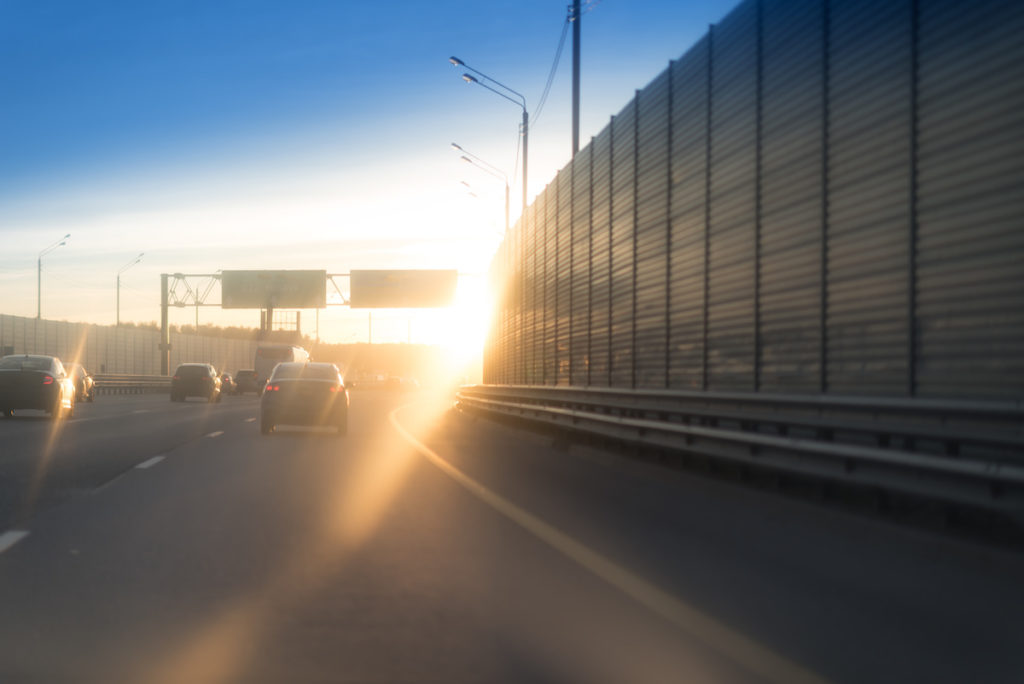Sound barrier walls are a functional and aesthetic solution to the loud noises that permeate the modern world. As the world continues to develop new, very loud machines, sound walls will need to continue to be created to quiet things down.
But while you may have noticed these sound walls as you’ve traveled down a highway, you may not know how exactly these walls work. The Slaton Bros, Inc team is full of sound wall experts, and we’d like to educate people more on how sound walls can help their communities.
In our inaugural blog, we’re taking a deep dive into the science and uses of sound walls, as well as discuss how the sound wall may change and proliferate in the future!
A Quick History Of Sound Walls
For the vast majority of human history, the ambient noise of communities would simply be nature. Bubbling brooks, birds chirping, insects buzzing; these would be the soundtrack of life, which normally wasn’t all that loud. However, the industrial revolution and noisy inventions like cars began to pollute the once-calm noises of life.
The issue that spurred the creation of sound walls, however, was the proliferation of highways through towns and cities. Highways became a source of constant noise that, understandably, frustrated the people living in these towns. More often than not, these towns were poor or populated by people of color, meaning they had little recourse in dealing with the issue. Enter noise barriers, a simple reaction to the cacophony of modern life.
The first sound barrier was created in 1968 in California, which began to proliferate after the Noise Control Act of 1972. Since then, sound barriers have been manufactured and installed all across the U.S in an attempt to mitigate highway, train, and other noise.
How Sound Barrier Walls Work
Sound walls are a surprisingly effective and simple solution to a complex problem. The basic mechanisms at play that make a sound wall effective are location, height, and sound reflection/absorption. The sound walls have to be placed in a way that they can block the most sound, which also means that height is a big factor too. If the wall isn’t tall enough, it won’t absorb or reflect enough sound.
The walls are also constructed with certain patterns and materials to absorb or reflect a certain amount of sound. There are currently dozens of iterations on the sound barrier design, all with different designs and materials to reduce the most noise.
Besides these basic factors, however, there’s not much to sound walls. They are a simple, elegant solution to an ever-increasing problem.
Where Are Sound Walls Most Useful?
The vast majority of sound walls are used along highways, due to the Noise Control Act of 1972. This act mandated that governments across the country used sound barriers wherever feasible and included some federal funding for them.
Sound walls are also used along train lines when they are near residential areas, though not as often.
Sound walls are also a fixture of commercial and industrial settings, where the can block or direct some heavy noise production from nearby residential centers. Sound walls will be used to cover commercial HVAC systems, for example.
How Sound Mitigation Will Evolve
Sound/noise barriers dominate the noise mitigation infrastructure of the United States, and for good reason. But that doesn’t mean that they are the only way to mitigate noise. There are actually quite a few other technologies that are being used to help reduce the sounds of the modern hustle and bustle.
Noise walls that focus on new-age absorption techniques are one avenue that is being discussed. These walls, instead of looking like normal concrete or steel walls, are made with special materials and patterns to absorb the sound before it escapes.
Other methods attempt to offer a more grounded approach to the issue. One of these technologies is quieter tires, a technology that tire companies are currently investing in. Most of the noise from vehicles on the highway actually comes from tires, so investing in this tech may have great benefits.
In addition, pavement is also an area of sound mitigation. Paving companies and government agencies are experimenting with this as well, which could have similar effects as quieter tires. Some states have already used quieter pavements to great success.
Finally, some further-out methods like luminescent solar concentrators (LSC) and bamboo are being used, as this Undark article explains. There are several methods of sound mitigation that are currently being explored, all with the potential to finally quite down the constant cacophony of our society.
Trust Slaton Bros, Inc. For Your Sound Barrier
While there are some exciting developments in sound mitigation, the sound barrier is a tried and true method for getting peace and quiet. Contact Slaton Bros. today to start construction for your project!
